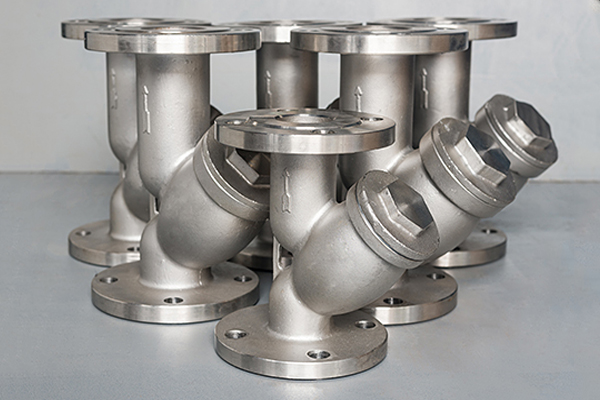Nickel Plating

Nickel is a silvery-white metal with a slight golden or yellow hue. As-deposited electrolytic nickel can have a very bright reflective shine, a satin appearance, or a matte luster. Nickel is one of the four ferromagnetic materials at room temperature and is a fairly reactive element. However, nickel deposits are slow to react in standard atmospheric environments due to the formation of a protective, oxide surface, providing excellent corrosion performance on most products. Nickel has an extremely high melting point of 1455C (2651F) making it an excellent nickel coating for high-temp applications.
For applications requiring a bright or lustrous appearance, bright watts nickel plating should be utilized. Bright nickel systems have organic additives that refine the grain structure of the nickel and deposit with a self-leveling effect to enhance luster. However, these additives can impair the solderability or brazing of the nickel and also result in a more highly tensile stressed deposit with reduced ductility. APT’s proprietary Ducta-bright 7a Nickel is an anomaly in the subset of bright watts nickel systems as it couples a bright nickel appearance with an excellent ductility.
For joining applications involving soldering, brazing or laser welding, sulfamate nickel plating is recommended. Sulfamate nickel produces a highly pure nickel deposit free of organic additives, resulting in a 99.9% pure nickel deposit with a satin or matte appearance. Unlike traditional brightened watts nickel systems, sulfamate nickel produces a compressively stressed deposit making is an excellent choice for crimping or flexing applications and as an underplate to gold plating applications including lead frames and interconnect pins.
As a general rule, un-brightened nickel deposits such as sulfamate nickel provide the best corrosion resistance as co-deposited inorganic compounds degrade corrosion performance. Minimal corrosion protection is provided in thicknesses less than 0.0003 inches, whereas good corrosion performance generally occurs between 0.0005-0.001 inches of nickel plating. More information regarding corrosion protection of nickel deposits can be found within the Plating Topics section of our online Technical Library.
